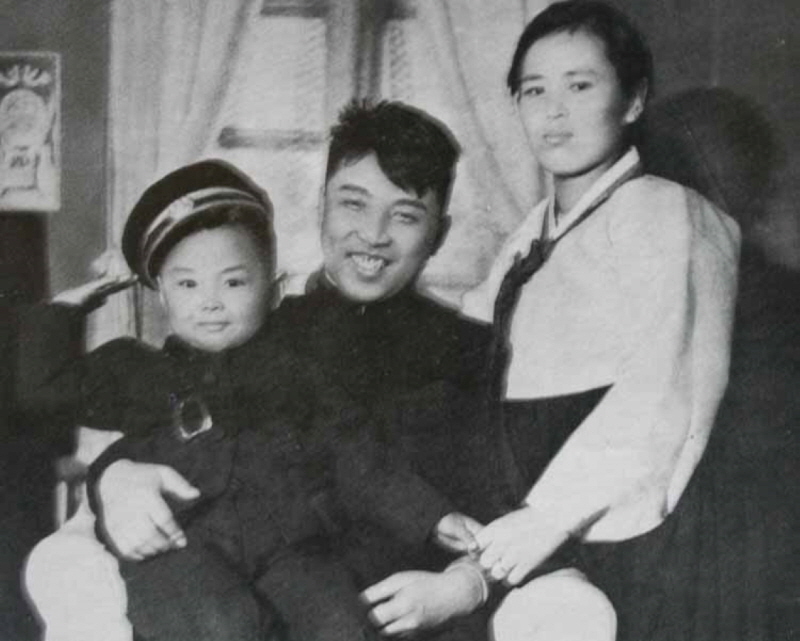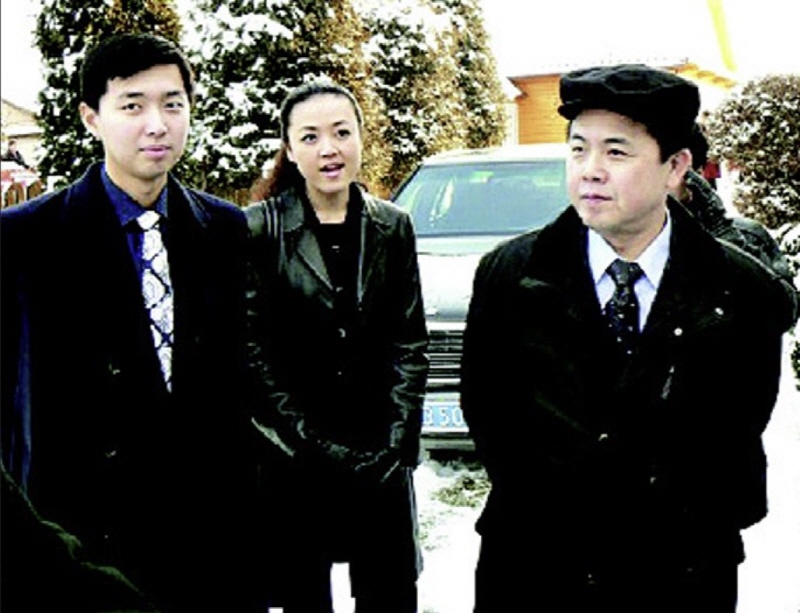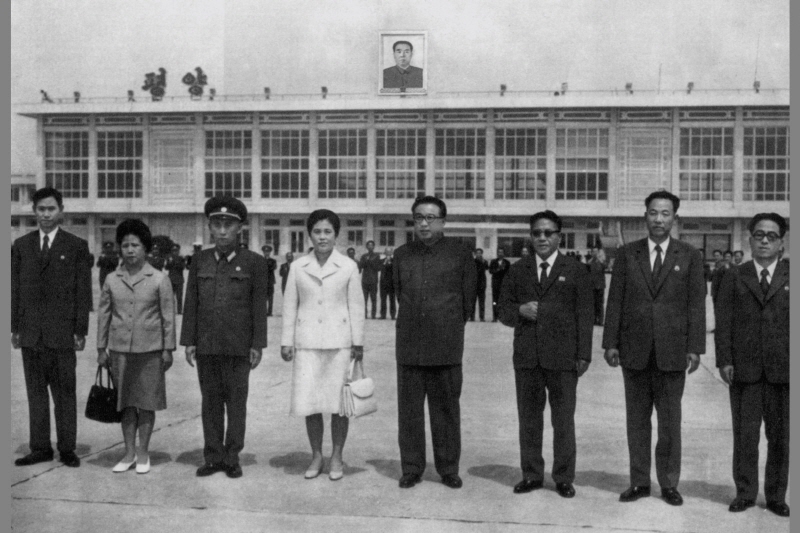[The truth behind the myth of Kim Il-sung]
Part 2: Controversy surrounding fake Kim Il-sung
Two marriages and his sons, Jong-il and Pyong-il
In 1941, Kim Il-sung fatefully met a woman named Kim Jong-suk. According to Shenyang’s archives, Kim Jong-suk was born in 1917 to a poor farming family in Hoeryong, North Hamgyong Province.
She had a basic level of literacy. In 1932, she moved to Manchuria to find her father in Paldogu, Yanji County. In 1935, she joined the 1st Division of the Northeast Anti-Japanese United Army. She was active in children’s and youth organizations and was never arrested. In March 1938, she joined the Chinese Communist Party and worked in the army’s kitchen. In October 1940, she moved with the unit to the Soviet Union.
Kim Il-sung and Kim Jong-suk were married in February 1942 during their guerrilla years. In the same year, they had their first son, Jong-il, and their second son, Pyong-il, in 1944. According to the records, their second son drowned in 1948 in a pond, reportedly due to Kim Jong-il’s mistake.

Kim Jong-suk died during childbirth in 1949, and there is a record that Kim Il-sung did not try his best to save her. Kim Il-sung remarried his secretary, Kim Sung-ae, in 1951.
Then a peculiar event occurred. After Kim Il-sung and Kim Sung-ae had a son, they named him Pyong-il, after their already deceased second son. This Pyong-il later served as North Korea’s ambassador to Poland and then to the Czech Republic.
[The myth of Kim Il-sung: North Korea’s founder and his shadowy parallels with Stalin]
This incident provides insight into the complex relationship between Kim Il-sung and Kim Jong-il, with Kim Jong-il possibly suffering from psychological trauma from fratricidal guilt every time he saw his brother.
When Korea was liberated, Kim Il-sung returned to the country on September 19, 1945, accompanied by 40 members of the Soviet 88th Brigade via Wonsan. The Soviet Union did not immediately consider Kim Il-sung as the leader of North Korea but rather as a notable figure.
In early September 1945, Marshal Aleksandr Vasilevsky, Commander-in-Chief of the Soviet Far East Command, received urgent orders from Stalin to secretly send Kim Il-sung and Park Heon-young to Moscow on a special transport plane.
“He’s a fake!”
An important aspect of Kim Il-sung’s life, often debated in South Korean society, is the authenticity of the “fake” theory. As a revolutionary fighter, Kim Il-sung had an unusual career. He became a communist early on and managed to survive, which contributed to his cult of personality. Additionally, he was never exposed when captured by the Japanese army, leaving little detailed information about him.
On October 14, 1945, people began gathering at Pyongyang Public Stadium early in the morning for the “Kim Il-sung Welcome Rally.” The crowd was estimated to be around 300,000 to 400,000 people. Among the guests were Soviet 25th Army Commander Ivan Chistiakov, Political Commissar Nikolai Lebedev, Civil Commander Alexander Romanenko, and Chairman of the Welcome Committee Jo Man-sik. Although Kim Il-sung was seated in the center of the stage, no one recognized him.
The first person to publicly question Kim Il-sung’s identity was playwright Oh Young-jin. A native of Pyongyang, Oh attended the rally and later wrote in his memoirs that the crowd expected an elderly general with white hair, but when a man who appeared to be in his 30s approached the microphone with a script in hand, whispers of “He’s a fake!” began circulating among the crowd.

Later, Lee Myung-young, a former professor of Sungkyunkwan University, strongly supported the fake theory. According to Lee, Kim Il-sung who led North Korea was not the legendary guerrilla fighter but a namesake.
The real Kim Il-sung, according to him, died in a battle in November 1937 in Manchuria. However, Lee was unable to present the legendary struggle of the real Kim Il-sung with historical fact. There was an anti-Japanese guerrilla named Kim Il-seon, who was around 30 years old at the time, but Lee argued that historians later confused the two, leading to the emergence of the “fake” Kim Il-sung.
The most vocal opponent of the fake theory was Kim Chul-su, a representative of the 3rd Korean Communist Party. In his memoirs, Kim Chul-su questioned how, if Kim Il-sung were a fake, South Korea’s Independence Promotion Central Council, led by Syngman Rhee, could have recommended such a young man as Military Committee Chairman. He concluded that the fake Kim Il-sung theory was a fabrication by Rhee.
The first scholar to academically assert that “Kim Il-sung was indeed involved in the independence movement” was Professor Suh Dae-sook of the University of Hawaii. Suh aimed to objectify modern history, distorted by ideological conflicts but acknowledged that the division of Korea prevented true scholarly objectivity. This limitation led him to write an English-language biography of Kim Il-sung, published in a third country in 1988.
A Cold War-era incident
The debate over Kim Il-sung’s authenticity was an incident shaped by the Cold War. While North Korea continues to uphold the myth of Kim Il-sung, efforts to demystify him should persist. However, as Professor Suh Dong-man of Sangji University points out, the debate over Kim Il-sung’s authenticity is merely a farcical outcome of the ideological confrontation between North and South Korea.

Throughout history, many myths have risen and fallen. While myths are often illogical, they are usually created by those who need them. Eventually, these myths will be exposed as illusions, but this process often involves significant time and pain. This is because many in the ruling class of that era depend on these myths for survival.
As long as the North Korean regime exists, the myth of Kim Il-sung will likely persist. The 30,000 statues of Kim Il-sung erected in North Korea are, after Buddha and Christ, perhaps the largest collection of monuments to a single figure in one country.
The frequency of Kim Il-sung and his son’s appearances on Pyongyang TV, broadcast from 6 p.m. to 10 p.m., is comparable to the appearance of Jesus on South Korea’s Christian Broadcasting Service. In 2007, I personally saw that Kim Il-sung still lived on the streets of Pyongyang.
(To be continued.)
BY BOKRYONG SHIN, YOUNGNAM KIM [kim.youngnam@koreadaily.com]
Shin is a former emeritus professor of history at Konkuk University.




